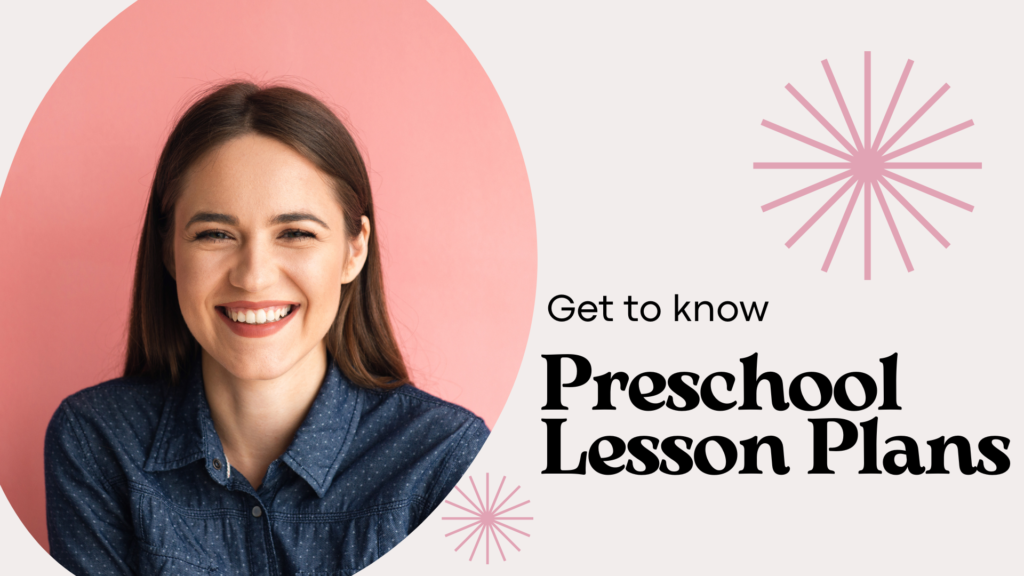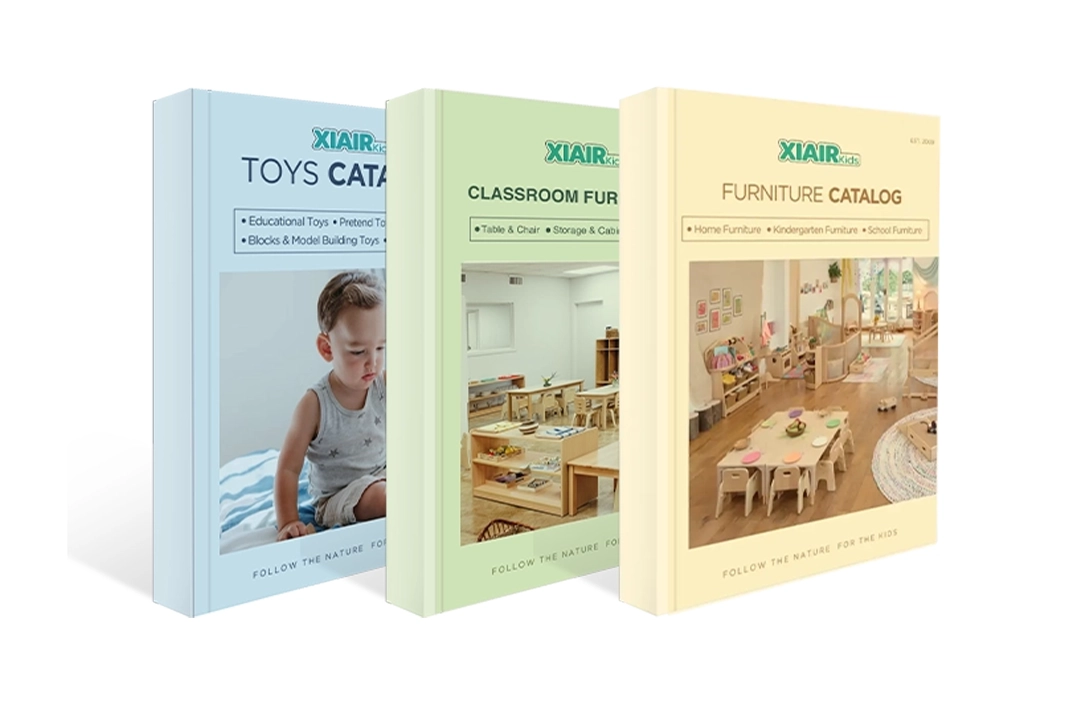Do you want to create effective preschool lesson plans? Are you struggling to keep children engaged during lessons? How do you ensure that your lesson plans align with developmental milestones? These are common questions many preschool educators face.
Creating a successful preschool lesson plan involves understanding the developmental needs of young children. A well-structured lesson plan ensures that activities are engaging, educational, and suitable for the children’s ages. Preschool lesson plans should aim to balance learning with play, fostering curiosity, creativity, and social skills.
The secret to a great preschool lesson plan is carefully selecting activities that promote cognitive, emotional, and physical development while making learning fun and meaningful.

What Is a Preschool Lesson Plan?
A preschool lesson plan is more than just a daily activity schedule. It’s a carefully crafted framework that ensures educators provide meaningful and developmentally appropriate learning experiences for young children. Preschool lesson plans should be designed to foster the children’s cognitive, social, emotional, and physical development. These plans typically include activities like circle time, hands-on projects, songs, and outdoor play aligned with the learning objectives for the day.
Preschool lesson plans are not just about keeping children occupied but are essential tools for guiding young learners through age-appropriate challenges. These plans balance structured learning and spontaneous play, both crucial for early childhood development. For example, an activity may introduce basic concepts such as counting, colors, or letters while promoting cooperative play and emotional growth.
By carefully planning each activity, teachers ensure that the children are exposed to a broad range of learning opportunities that align with their developmental stages. As we move forward, we’ll explore the key learning goals for preschool success, which guide the structure of any well-designed preschool lesson plan.
Key Learning Goals for Preschool Success
The success of any preschool lesson plan hinges on its ability to support the development of key skills that form the foundation for future learning. Whether you’re looking for preschool lesson plan ideas or seeking inspiration for preschool education lesson plans, these essential learning goals will guide you in creating a comprehensive and balanced curriculum.
Basic Academic Skills and Concepts
- Early Math Concepts
Early math skills form the foundation for later academic success. Preschool children begin learning basic math concepts such as counting, identifying shapes, and comparing sizes. By incorporating activities like counting objects, sorting by color, and identifying shapes in the environment, preschool lesson plans can foster these early math skills in a fun and engaging way. - Pre-writing Skills
Writing readiness starts with developing the fine motor skills required to hold a pencil and form letters. Activities such as drawing, tracing shapes, and using playdough help children build the muscle control necessary for writing. Preschool lesson plan ideas often include these activities to strengthen children’s pre-writing abilities. - Pre-reading Skills
Pre-reading skills are crucial for building early literacy. Preschool lesson plans often include activities that help children recognize letters, understand letter sounds (phonemic awareness), and develop a love for books. Through songs, stories, and interactive reading, children can develop essential pre-reading skills that set the stage for more advanced literacy learning. - Visual and Auditory Perception Skills
Perception skills are fundamental for a child’s ability to interpret the world around them. Preschool lesson plans are designed to include activities that promote visual perception, such as recognizing colors, shapes, and patterns, as well as auditory perception, which involves distinguishing sounds and rhythms. These sensory experiences support cognitive development and early problem-solving abilities.
Motor Skills
Preschool children also need opportunities to develop fine motor skills (such as using scissors, holding pencils, or stacking blocks) and gross motor skills (like jumping, running, and balancing). Activities integrating movement and coordination, such as obstacle courses or arts and crafts, should be incorporated into preschool education lesson plans to help strengthen physical development.
Social-Emotional Skills
In addition to academic skills, preschool is a time for children to develop social-emotional skills. Learning to interact with peers, share toys, take turns, and regulate emotions is vital to a preschooler’s growth. By including cooperative games, circle time discussions, and peer interactions in preschool lesson plans, educators can help children build positive social-emotional foundations that will benefit them throughout their lives.
Cognitive Skills
Cognitive development in preschool focuses on critical thinking, problem-solving, memory, and attention. Children develop their mental abilities by incorporating preschool lesson plan ideas that encourage exploration, such as puzzles, games, and discovery activities. These activities promote logical thinking and stimulate curiosity and imagination, essential for lifelong learning.
These key learning goals are at the core of every effective preschool lesson plan. By aligning your preschool education lesson plans with these goals, you can create a dynamic and nurturing learning environment that supports children’s academic and personal development.
Your perfect classroom is one click away!
Why Preschool Lesson Plans Matter: Laying the Foundation for Lifelong Learning
Preschool lesson plans are much more than just a schedule of activities—they are critical to laying the groundwork for a child’s future success in school and life. These lesson plans serve as the framework for introducing children to key academic and social concepts, helping them build a strong foundation in their early years of development.
Children rapidly develop in various areas at the preschool stage, from cognitive skills to emotional intelligence. A well-designed preschool lesson plan ensures that each activity is purposeful, promoting skills that will serve as building blocks for future learning. For example, a lesson focused on early math concepts like counting or shape recognition teaches fundamental math skills and introduces problem-solving and critical thinking. Similarly, activities that promote social interactions teach valuable lessons in sharing, cooperation, and conflict resolution.
Preschool lesson plans are essential because they can create a structured yet flexible environment where children can explore new ideas, take risks, and develop confidence in their abilities. Well-crafted lesson plans ensure that children are introduced to new concepts at an appropriate level of complexity, which helps keep them engaged and motivated to learn.
Preschool lesson plans focus on a balanced mix of academic and social-emotional learning, laying the foundation for a lifelong love of learning. Children exposed to diverse, hands-on learning opportunities in their early years are more likely to develop strong academic skills, emotional resilience, and a positive attitude toward school.

Thematic Calendar vs. Emergent Curriculum: Which Approach Works Best for Your Classroom?
When designing preschool lesson plans, teachers often choose between two primary approaches: thematic calendars and emergent curriculums. Each has advantages, and understanding the differences can help you select the best fit for your classroom.
- Thematic Calendar Approach: This approach revolves around predetermined monthly or weekly themes. Themes might include topics like “Autumn,” “Dinosaurs,” or “Community Helpers.” Each lesson is tied to the theme, helping children make connections between different subjects. This structured approach ensures a wide range of concepts are introduced throughout the year.
- Emergent Curriculum: Unlike the thematic calendar, an emergent curriculum is more flexible. It is child-led and based on the interests and curiosities of the children in the class. If a child becomes fascinated by bugs, the educator might shape a week of lessons around insects, exploring it through stories, art, and outdoor observation.
While the thematic approach provides structure and ensures all key learning areas are covered, the emergent curriculum fosters deeper engagement by allowing children to follow their interests. The best approach often combines elements of both, allowing for planned structure while providing space for spontaneous exploration.
| Aspect | Thematic Calendar Approach | Emergent Curriculum |
| Structure | Pre-planned and organized around specific themes. | Flexible and evolves based on children’s interests. |
| Focus | Covers a wide range of topics over a set time period. | Focuses on topics that emerge from children’s curiosity. |
| Teacher’s Role | Covers a wide range of topics over a set period. | Teacher acts as a facilitator, guiding the children’s exploration. |
| Lesson Planning | Fixed, based on a set schedule and theme (e.g., “Winter”). | Dynamic and changes based on children’s emerging interests. |
| Learning Experience | More structured and predictable. | More spontaneous, responsive to children’s input. |
| Ideal for | The teacher acts as a facilitator, guiding the children’s exploration. | Classrooms need a clear structure or curriculum to follow. |
Crafting the Perfect Preschool Lesson Plans: A Step-by-Step Guide
Creating the perfect preschool lesson plan doesn’t have to be overwhelming, especially if you approach it step by step. The goal is to design engaging, educational, and developmentally appropriate activities that capture children’s attention and promote their growth across multiple domains. Whether you are looking for preschool lesson plan ideas or creating your preschool education lesson plans, a well-crafted lesson plan should meet each child’s learning goals while making learning fun and interactive.
Here’s a detailed, step-by-step guide to crafting an effective preschool lesson plan:
1. Define Clear Learning Objectives
Before diving into the activities, it’s essential to establish the learning objectives. These objectives are the foundation of your preschool lesson plans. What do you want the children to learn by the end of the lesson? Your objectives should be specific, measurable, and developmentally appropriate. For example:
- Children will recognize and name primary colors.
- Children will understand the concept of counting to 10.
- Children will practice cooperative play with peers.
Defining clear objectives helps guide the structure of your lesson and keeps you focused on the desired learning outcomes. Preschool lesson plan ideas should always start with a goal in mind.

2. Choose Appropriate Activities
Once your objectives are set, it’s time to decide on activities to help achieve them. Remember that preschoolers learn best through hands-on, engaging, and age-appropriate activities. Choose activities that allow for exploration, creativity, and social interaction. Here are some examples of activities you could include:
- Arts and Crafts: Drawing, painting, and cutting activities help build fine motor skills and encourage creativity.
- Storytime: Reading aloud promotes language development, listening skills, and imagination.
- Outdoor Play: Physical activities such as running, jumping, or obstacle courses enhance gross motor skills.
- Songs and Music: Singing songs, especially those with actions, helps improve memory, language skills, and coordination.
Remember, each activity should align with the learning objectives you’ve defined. Consider incorporating preschool education lesson plans that include a variety of activities throughout the day—such as a mix of quiet time (like reading), physical play (like running), and cooperative play (like building together)—to maintain children’s interest and keep them engaged.
3. Gather Materials
Having all your materials ready is essential for a smooth lesson. Preschool lesson plans should always include a list of materials needed for each activity. This could include:
- Paper, crayons, and scissors for arts and crafts
- Books for storytime
- Counting blocks or toys for math activities
- Music instruments or songs for musical activities
By preparing materials beforehand, you can avoid unnecessary delays and interruptions during the lesson, allowing for a smoother flow of activities.
4. Structure Your Day with Transitions
Preschoolers may find it challenging to move from one activity to another, so planning for transitions is essential. Preschool lesson plan ideas should include transitions that are both structured and flexible. Transition strategies could consist of:
- Songs or Rhymes: A short song or rhyme can signal the end of one activity and the start of another.
- Visual Cues: Use pictures or signs to indicate what activity is next, especially for younger children still developing language skills.
- Clear Instructions: Give clear instructions about what is expected during transitions (e.g., “We are going to clean up now and get ready for storytime”).
Transitions should not be rushed; they should help children prepare mentally for the next part of the lesson.
5. Incorporate Assessment and Reflection
An essential part of any preschool lesson plan is incorporating methods to assess children’s learning. This could involve simple observation during activities, asking children questions, or reviewing their work. For example:
- During a counting activity, observe if children can count the objects correctly.
- Check if they can follow the instructions and use the materials as intended in an art activity.
Reflection is equally essential. After the lesson, take some time to evaluate what went well and what didn’t. Did the children meet the learning objectives? Were the activities engaging enough? Were there any challenges during transitions? This reflection will help you improve and refine your preschool lesson plans.
6. Adjust for Flexibility
One of the most important things to remember when crafting preschool lesson plans is to remain flexible. Children’s interests and energy levels can vary; sometimes, activities may take longer than expected or must be adjusted on the fly. If a child shows extra interest in a specific topic, be open to expanding the lesson to explore that topic further. Switching gears and trying something else is okay if an activity isn’t engaging.
Preschool lesson plan ideas should be adaptable, allowing you to respond to the children’s needs while still achieving the overall learning objectives.
Your perfect classroom is one click away!
How to Use Themes Effectively in Preschool Lesson Plans
Choose Developmentally Appropriate Themes
The first step in integrating themes into preschool lesson plans is selecting topics that align with children’s developmental stages and interests. Familiar themes such as weather, animals, community helpers, or the four seasons provide a familiar context that supports cognitive and language development. These themes help structure the week’s lessons around a central idea, giving young learners a consistent framework.
Connect the Theme Across All Learning Domains
Effective preschool lesson plans extend the chosen theme into every part of the day. For instance, a “Transportation” theme could guide story selections during literacy time, counting exercises in math, wheel-based crafts in art, and movement games that simulate driving or flying. This cross-curricular approach reinforces understanding and makes learning more engaging and memorable.
Incorporate Hands-On, Play-Based Activities
Thematic instruction should include a variety of sensory and interactive experiences. In preschool lesson plans, incorporating activities such as themed sensory bins, songs, role-play scenarios, and open-ended art projects allows children to explore concepts in a concrete, meaningful way. For example, a “Farm” theme might include pretend animal care in the dramatic play area and planting seeds in the science center.
Plan Weekly or Monthly Theme Schedules
Organizing preschool lesson plans around weekly or monthly themes provides structure for both teachers and children. A consistent theme schedule ensures that content is well-paced and gives educators time to introduce, reinforce, and extend learning. It also supports smoother transitions and stronger concept retention.
Align Themes with Learning Objectives
While themes can make preschool lesson plans more engaging, they should always serve a clear educational purpose. Ensure that each themed activity supports specific developmental goals, whether related to language, motor skills, problem-solving, or social-emotional learning. Themes should enhance the core objectives rather than distract from them.
6 Fun and Effective Preschool Lesson Plan Ideas to Try
Creating engaging and effective preschool lesson plans can sometimes feel like a challenge. Still, with the right ideas, you can turn any lesson into a fun, interactive, and educational experience for young children. Teachers can ensure that children learn and enjoy the process by including activities that foster cognitive and social-emotional growth. Here are six fun and practical preschool lesson plan ideas to try in your classroom:
1. Shape Hunt Adventure
Objective: Children will identify and name basic shapes (circles, squares, triangles, etc.).

Activity: Create a “shape hunt” where children find objects in the classroom or outside that match the shapes being discussed. You can use colored construction paper cutouts in different shapes and hide them around the area. Once children find a shape, they will bring it to a group and identify it by name.
This activity is part of a preschool lesson plan on early math concepts. It reinforces spatial awareness and introduces foundational geometry in a fun and interactive way. Preschool lesson plan ideas like this one combine movement with learning, which is ideal for young, energetic children.
Materials Needed: Shape cutouts, markers, and tape to stick the shapes around the classroom.
2. Sensory Exploration with Playdough
Objective: Children will enhance their fine motor skills and explore textures.

Activity: Set up a sensory station where children can play with different colored playdough. Encourage them to roll, squish, and mold the dough into various shapes, letters, and numbers. To build more advanced skills, you can incorporate tools like rolling pins, cookie cutters, or plastic utensils.
This activity is an excellent addition to preschool lesson plans for developing fine motor control and creativity. Playdough is a versatile material for preschool lesson plans, as it engages multiple senses and encourages children to think critically while engaging in hands-on learning.
Materials Needed: Playdough, rolling pins, cookie cutters, and plastic utensils.
3. Color Mixing Magic
Objective: Children will learn about primary and secondary colors.

Activity: Using food coloring and water, demonstrate how mixing primary colors (red, blue, and yellow) results in secondary colors (orange, green, and purple). Give children small containers of colored water and let them experiment with combining colors to make their magical mixtures. You can even add a little science by explaining the concept of “mixing” and how colors blend.
This fun activity fits well into preschool lesson plans focused on early science and art concepts. It teaches about colors and introduces the idea of cause and effect simply and engagingly. Preschool lesson plan ideas like this one help children develop an understanding of basic science concepts while fostering creativity.
Materials Needed: Food coloring, water, clear containers, and mixing spoons.
4. Nature Walk and Observation
Objective: Children will observe and identify elements of nature.

Activity: Take the children on a nature walk around the playground, schoolyard, or a nearby park. As they walk, ask them to observe different natural objects, such as leaves, flowers, rocks, and trees. Provide them with simple tools like magnifying glasses to look closer at the textures of objects. After the walk, have a discussion in which children share what they observed and learned.
This preschool lesson plan idea is an excellent way to incorporate both physical activity and learning into a single activity. It connects children to the natural world, promotes outdoor exploration, and introduces basic biology concepts, all while keeping the lesson fun and interactive. It’s an excellent way to teach observation skills, categorization, and vocabulary.
Materials Needed: Magnifying glasses, paper, crayons (for drawing what they see).
5. Musical Chairs with a Learning Twist
Objective: Children will follow instructions and develop their listening skills.

Activity: Play a classic game of musical chairs but with a twist. As the music plays, periodically stop and call out specific actions for the children to perform, such as “hop like a bunny,” “twirl like a ballerina,” or “march like a soldier.” When the music stops, children must find a chair and complete the action you called out before sitting down.
This game teaches children the basic rules of traditional games and enhances listening, concentration, and motor skills. It works well in preschool lesson plans, incorporating movement and music, making learning feel like play.
Materials Needed: Music player, chairs, space for dancing.
6. Create Your Storybook
Objective: Children will practice storytelling and fine motor skills.

Activity: Give each child a blank book (or folded pieces of paper stapled together to make a booklet) and encourage them to create their own story. They can draw pictures, use stickers, or dictate their story to an adult or older child to write for them. Afterward, have the children share their stories with the class, promoting communication skills and building confidence.
This activity fits seamlessly into preschool lesson plans focusing on language development and creativity. It boosts literacy skills and encourages children to express themselves through art and storytelling. Preschool lesson plan ideas like this help foster a love of books and reading while nurturing early literacy skills.
Materials Needed: Blank books or stapled paper, crayons, stickers, markers.
Effective Strategies to Engage Families in Preschool Theme Activities
Involving parents and caregivers in preschool theme activities can significantly enhance the effectiveness of preschool lesson plans. When families are engaged in the learning process, children are more likely to show interest, confidence, and continuity between home and school environments.

Communicate the Weekly or Monthly Theme
Begin by sharing the theme in advance through newsletters, emails, or classroom apps. Clearly outline how the theme connects to your preschool lesson plans, and offer simple ways families can support learning at home. For instance, if the classroom theme is “Community Helpers,” parents might be encouraged to talk about their jobs or arrange a visit from a local firefighter or nurse.
Offer At-Home Extension Activities
Include home-based activities in your preschool lesson plans that align with the classroom theme. These may include reading recommended books, engaging in simple science experiments, or completing themed crafts using household items. When families participate in parallel activities, it reinforces classroom learning and builds stronger home-school connections.
Encourage Participation in Classroom Events
Invite parents and caregivers to join themed classroom activities when appropriate. For example, during a “Culture and Traditions” week, families could contribute stories, foods, or songs that represent their backgrounds. This not only supports the theme but also fosters a sense of inclusion and community within the classroom.
Provide Feedback and Celebrate Involvement
Acknowledging family contributions is essential. Share photos, display completed home activities, or include a family spotlight in your communications. When parents see their involvement reflected in preschool lesson plans and classroom routines, they are more likely to remain actively engaged throughout the school year.
By integrating family engagement into your preschool lesson plans, you create a more holistic, consistent, and meaningful learning environment for every child.
Conclusion
These preschool lesson plan ideas are fun and highly effective in supporting young children’s development. Whether you are teaching early math, fine motor skills, science, or language, these activities provide diverse opportunities for growth in all developmental areas. Incorporating these engaging activities into your preschool lesson plans creates an enriching environment that encourages children to explore, learn, and grow through play.
At XIAIR World, we understand that creating an effective learning environment goes beyond lesson plans. That’s why we specialize in providing high-quality, customizable preschool furniture to support every aspect of early childhood education. With over 20 years of experience in the industry, we offer a one-stop service from classroom design and furniture customization to production, quality inspection, and delivery. Whether you need durable chairs, tables, or storage solutions, we can provide a wide variety of preschool furniture in different styles, materials, and sizes to meet your needs. Our commitment to quality and customer satisfaction ensures that your learning environment will be functional and inspiring for the children in your care.
As you design your preschool lesson plans, remember that the right furniture and environment are just as important as the activities. At XIAIR World, we help you create a space where children can learn, play, and grow.


